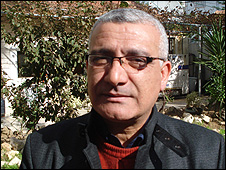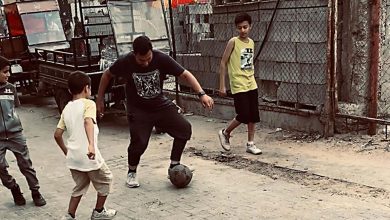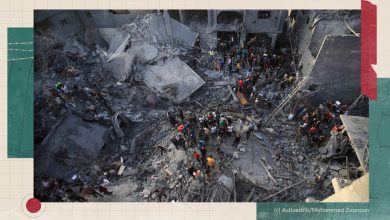Propositions to reconstruct Gaza Strip

By Omar Shaban
1. Introduction:
Despite its evident humanitarian dimension, the Gaza rebuilding question is difficult and interrelated among economics, humanitarian, local, regional and international elements. This is how the issue seemed since the war ended and the extent of destruction on Gaza infrastructure, premises, facilities and people became evident. We should not look into this issue from a humanitarian perspective only, despite its importance, as the destruction afflicted in Gaza occurred when the economic, political and social conditions have reached their peak worse levels since the end of 2000. These conditions are moving to more deteriorating levels where the volume of losses, based on international estimations have reached beyond 15 billion dollars by 2005. Politically, rebuilding Gaza is taking place in the midst of a Palestinian sharp division that has left its glooming shades over all issues including the Palestinian/Arab relations. On the social domain, Gaza Strip has witnessed highest percentages of poverty, unemployment and price rise with the lack of goods and humanitarian assistance as well as wide spread of diseases and anaemia. Therefore, this paper is to deal with the Rebuilding of Gaza as a Development project that includes the building of what the war destructed, but in a new context and a new philosophy look for economic and social level better that the current ones, benefiting from previous rebuilding experiences and missions that should have executed, in addition to treating the malformation and losses of the Palestinian economy during the past years. What is required for the coming phase in an abbreviated phrase is a political, human, residential and social restoration that will push forward the needed goal.
2. Obstacles facing the reconstruction as envisioned in this paper:
Technical obstacles:
The enormity of mission: Gaza Strip witnessed a big destruction. All ministries, civil, military, security and police institutions were destructed in addition to private houses, farms, factories, streets, cars, public properties and infrastructure. All in a relatively limited geographic spot of extremely high population density (highest in the world), poor and suffering from several problems. · Coordinating Tracks: The mission enormity and amplitude impose the need to identify priorities (disagreed upon issue) and its interlaced dimensions. Humanitarianly, citizens whose houses where destructed must be housed immediately. Technically there are several required procedures and steps. There are also difference in estimations of volume of losses due to differences in methodologies pursued where some estimations focus on the value of the destruction neglecting the furniture, equipment, computer systems and other things of human value ·
Insufficient funds and its permanence: There is a great concern over the availability of the needed and sufficient funds and at the right needed period as previous experiences for donor countries have indicated perpetually big gaps between commitment and execution of financing not forgetting the ambiguity in volume of financing required to be adopted by the donors and the international community ·
Property clinch: There are problems pertaining the availability of verification documents among the demolished house owners connected to multiple reasons. This is a legal issue and should be dealt with as suitable for each case to appear in this area · Estimating non traditional properties: It was pointed before that one of the major weaknesses in the estimation of losses was that it focused on buildings without considering other belongings such as cars, jewelry, clothes, valuable acquisitions in addition to computer devices, systems, archives, technical equipment related to governmental, civil and non governmental institutions
Level of accuracy in estimating losses: According to previous points, such estimation will suffer from relatively low accuracy. There will be problems in estimating damages in luxurious buildings like villas as a partial damage might be bigger than a complete damage in an ordinary house.
Required Time period: It will be difficult to identify a time interval for the reconstruction as all needed resources are not available and at the right time. Additionally, there might be prerequisites for international institutions that are contradictory with the local and governmental perceptions. The big volume of the mission needs a time range that might be prolonged despite the importance for fast accomplishment due to the Humanitarian dimension of the issue.
2.2 Political obstacles: ·
Reconciliation and political situation: It became clear that the international community will find difficulty to seriously deal with the Gaza reconstruction in the presence of Palestinian sharp internal division. Therefore, reconciliation is a necessary condition, even the most important thing Palestinians can obtain as an award for their steadfastness facing the aggression.
Crossings: The reopening of all crossings is another necessary condition for the success of the reconstruction that is in need for building materials and all other relevant construction materials from the outside.
3. Administering the reconstruction: The reconstruction philosophy: Reconstruction could be implemented based on previous situation. However, reconstruction based on a new philosophy that considers other economic, environment, social and health dimensions is preferred. Transparency and Integrity: By following standard means, legal and financial tools and coordinating with donors Activation of local economy participation: The private sector can efficaciously participate in the reconstruction mission. There are about 200 companies connected with housing and contracting spheres and have the required experiences. This will bring the companies to its previous activity after two years stretched of recession. This will create jobs intensely needed by the Palestinian economy Inclusive planning: To guarantee that reconstruction will treat past errors, abandon fortuitous planning and have adequate land use in line with housing, agriculture, industrial and recreational plans. This planning should be within the framework of good land use and considering community priorities.
4. Accelerating accomplishment ·
Establish a drifting harbour with a movable dock and this does need no time or effort ·
Open the crossings completely and continuously
Harmonize between the need and the speeding up of accomplishments with commitment to transparency and good planning · International funding:
Providing new mechanism for funding as current mechanism (PEGASE) or the previous one (TIM) was for paying of salaries and running costs. The reconstruction process needs suitable new mechanisms
Present new products and variety of programs
Grant loans on favourable terms
Direct payment to those affected
Human and social rehabilitations
5. Establish the national commission for reconstruction and development:
There is a clear argument over the party to implement the reconstruction and this debate is affected by the prevailing political attraction. Evidently, the role of international donors will be important in the reconstruction. But on the local field domain, this paper suggests to establish the national commission for development and reconstruction to embrace a variety of key social figures, university experts and the civil society to contribute in the process. Its mission will include:
A medium between the community and the donors
Receiving applications, coordinating and examining them
Coordinating among different parties involved
Raising recommendations to donors This commission has a specific development societal role in the reconstruction process as it will guarantee the social contribution in this important operation




